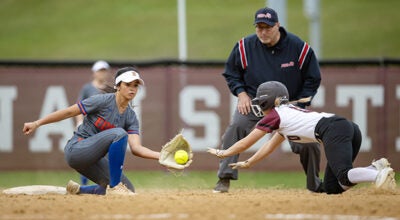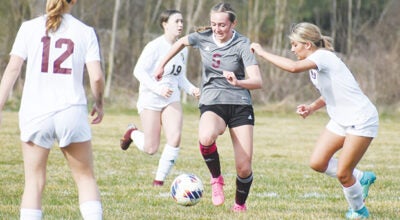EHD outbreak’s effect on our deer
Published 2:27 am Wednesday, November 3, 2010
 With fall fully upon us, it seems deer are on everyone’s mind for lately I’ve been getting a lot of questions about the Epizootic Hemorrhagic Disease (EHD) outbreak here in southwestMichigan in September.
With fall fully upon us, it seems deer are on everyone’s mind for lately I’ve been getting a lot of questions about the Epizootic Hemorrhagic Disease (EHD) outbreak here in southwestMichigan in September.
 For those that missed the article on EHD that ran a few weeks ago, it’s a disease transmitted by a biting gnat that infects deer and other wild ruminants such as elk and pronghorn antelope. It apparently can’t readily be passed from animal to animal, it takes a direct bite. Domestic animals and humans aren’t known to be susceptible.
For those that missed the article on EHD that ran a few weeks ago, it’s a disease transmitted by a biting gnat that infects deer and other wild ruminants such as elk and pronghorn antelope. It apparently can’t readily be passed from animal to animal, it takes a direct bite. Domestic animals and humans aren’t known to be susceptible.
As its name suggests, EHD causes bleeding in the internal organs by weakening blood vessel walls and interfering with blood clotting. It’s also sometimes incorrectly called blue tongue or black tongue disease as sometimes the animal’s tongue turns a bluish-black (actually EHD and blue tongue are different diseases but so similar we shan’t quibble over it).
Symptoms appear about seven days after being infected. Typical signs are loss of appetite, less fear of humans, weakness, excessive salivation and rapid pulse and breathing. The animal also develops high fever, causing it to go to a pond or stream to cool down, which explains why deer that have died from EHD are often found in or near water. Not all animals that contract the disease die; some recover. There is no known treatment or effective control methods.
EHD is quite common in the southeastern states but only a casual visitor this far north. The disease isn’t new toMichigan. The first known outbreak here was way back in 1955. The next appearance was in 1974, killing approximately 100 deer. The disease laid low for a long time until in 2006 it appeared in Allegan County where 50-75 deer expired. It skipped a year then in 2008 popped up in Oakland and Macomb Counties in the southeastern corner of the state with a death toll of 150 to 200 deer.
It now appears to be a nearly annual event, for in 2009 it popped up in Livingston County and this year it chose our stomping grounds here in the southwest corner of the state. Many theorize that these recent frequent outbreaks are due to warmer temperatures allowing the gnats to wander farther north. There you go, good old global warming in the news again.
Most of the readers contacting me are wondering if the disease is occurring in their area. To get the most current information I just talked to one of our local DNRE biologists. He said there are four known areas, all here in southwestMichigan. Apparently the most significant one is in southeastern Cass County in the area between Jones and Union. There was only one other Cass County case a bit further north between Volinia and Marcellus. In Berrien County it has been confirmed in the area south of Three Oaks. The final location is in Van Buren County in the Lawrence/Glendale area. Of course, bugs are mobile so there could have been minimal incidences elsewhere that went undetected.
Most folks are also concerned about how many deer have died and the impact on the population. As there is no cure or preventive measures that can be taken the DNRE has not attempted to document the amount of lost deer. Once EHD is confirmed in an area it really serves no purpose to try and get body counts when you can’t do anything about it anyway. However, estimates of past outbreaks run from 50 to 200, not a significant number in the overall scheme of things. Hunters and Hondas kill far more. Of course, if the outbreak happens to occur in your back yard it would seem catastrophic to you but it is localized.
Reportedly EHD does not affect the meat and an infected animal is safe to eat. Well…I dunno, I think I’ll let Mikey try it first; he’ll eat anything. The good news is EHD typically only appears in late summer and early fall and then abruptly ends with the first hard frost. We’ve already had several good frosts so we can probably assume it’s over for this year.
Carpe diem.
Larry Lyons writes a weekly outdoor column for Leader Publications. He can be reached at larry@lyonsgunworks.com






